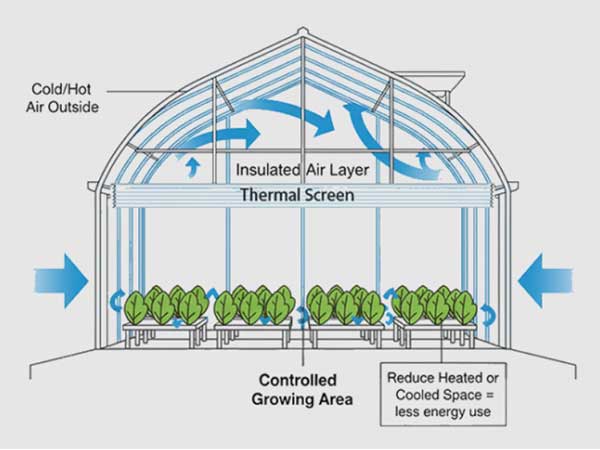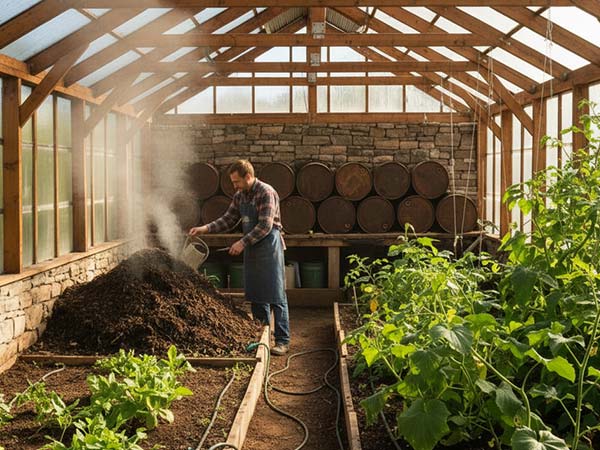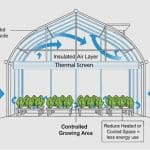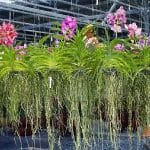During the hot summer months, a greenhouse can easily turn into an “oven.” Even when the outdoor temperature is only 30°C (86°F), the inside of a greenhouse may rise to 35–45°C. For plants, such heat can cause scorched leaves, reduced fruit quality, or even large-scale crop loss.
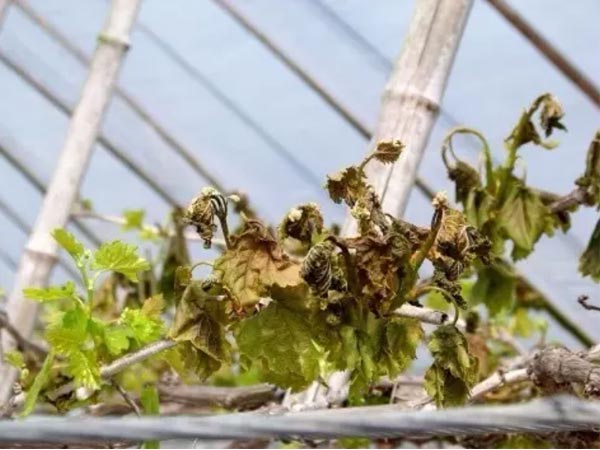
What makes things even more challenging is the rising cost of energy. Traditional systems powered by electricity are not always affordable or practical. This leads to a common question for growers: Is there a way to keep a greenhouse cool in summer without relying on high-energy equipment?
In this article, INSONGREEN shares a range of practical strategies—from shading and ventilation to evaporative and passive design—that can help you maintain a comfortable environment inside your greenhouse. Whether you’re a home gardener or running a commercial operation, you’ll find workable ideas here.
Why Does a Greenhouse Get So Hot in Summer?
A greenhouse overheats primarily due to the greenhouse effect. Sunlight easily passes through glass or plastic coverings, but once inside, it is absorbed by soil and plants and re-emitted as heat. Unlike light, heat does not escape efficiently, so it becomes trapped, causing the temperature to rise quickly. Poor ventilation exacerbates this issue—without sufficient roof vents or side openings, hot air accumulates, creating an uncomfortable environment for plants, especially on calm summer days.
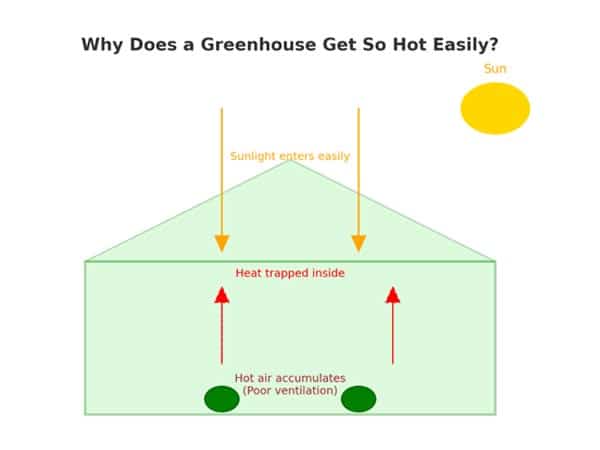
Another challenge is the high cost of energy. While fans or air conditioners could reduce heat, they are often too expensive to run continuously. This is why many growers turn to passive or low-energy methods, which are both practical and sustainable for summer greenhouse management.
5 Ways to Cool a Greenhouse Without Electricity
1. Shading: Blocking Excess Sunlight
One of the simplest and most effective ways to cool a greenhouse without electricity is shading. By reducing the amount of sunlight that enters, you can prevent excess heat from building up inside.
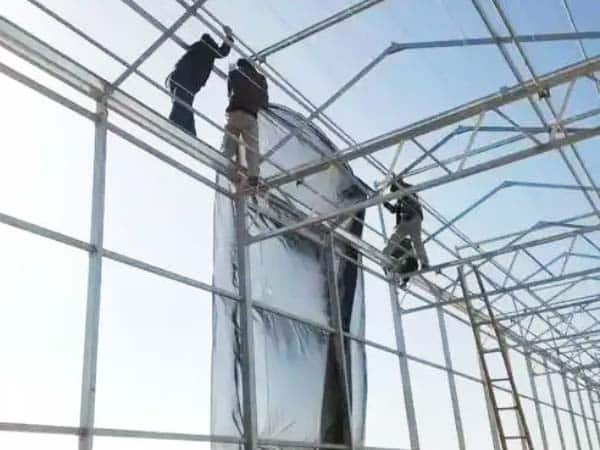
Shade cloth is the most common option, available in different shading percentages (30%–70%). For vegetables like tomatoes or cucumbers, 40–50% is often enough, while more sensitive crops or flowers may need 60–70%. Another method is shade paint or whitewash, which is applied to the roof of glasshouses. It reflects sunlight during summer and can be washed off in cooler months to restore full light.
For more information, you can read this post: What Percentage of Shade Cloth is Best for Greenhouse Plants?
2. Natural Ventilation: Letting Hot Air Escape
Ventilation is another critical element of passive.
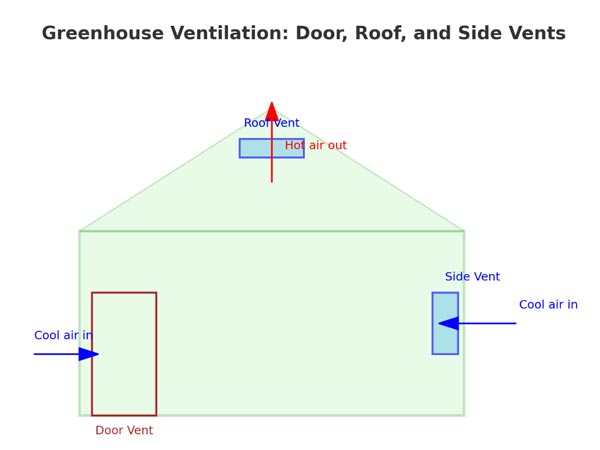
Hot air naturally rises, so roof vents allow it to escape, while side vents bring in cooler outside air. Cross-ventilation, where air flows from one side of the greenhouse to the other, can significantly reduce heat buildup. For best results, the total area of vents should be at least 15–25% of the greenhouse floor area. Even without fans, this airflow design can lower the internal temperature by several degrees, especially when combined with shading.
3. Evaporative: Using Water to Absorb Heat
Water has a natural effect when it evaporates, and growers can take advantage of this without electricity.
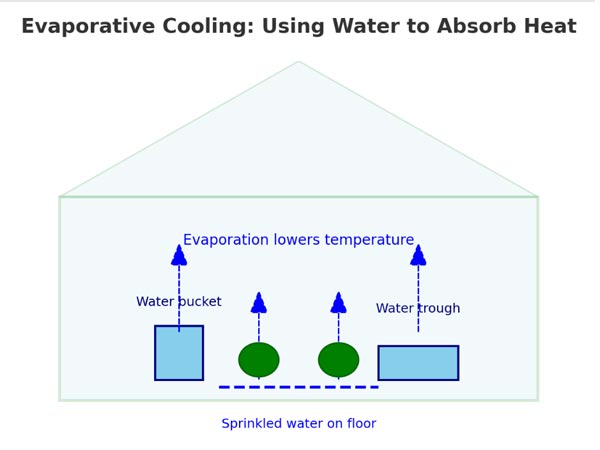
A simple method is sprinkling or wetting the greenhouse floor; as the water evaporates, it lowers the surrounding air temperature. Another option is placing open containers such as buckets, troughs, or shallow tanks filled with water inside the greenhouse. These not only increase humidity but also help buffer temperature swings throughout the day. While this method will not drop the temperature dramatically, it can provide a noticeable effect in small greenhouses.
4. Insulation and Reflection: Keeping Heat Out
Another effective way to cool a greenhouse without electricity is to prevent heat from entering in the first place.
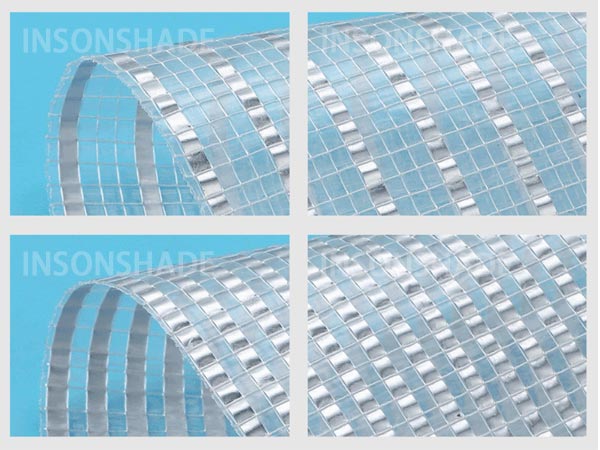
Reflective materials such as aluminum foil screens or thermal curtains can be installed on the roof or walls to bounce sunlight away. Some growers also use a double-layer covering, combining shade cloth on the outside with a thermal screen on the inside. This layered design not only reduces incoming heat but also improves energy efficiency in cooler months. The main advantage is that these materials can be reused year after year, making them a cost-effective solution in the long run.
5. Passive Design and Plant-Based Shading
Passive design is about working with natural elements to keep the greenhouse cooler.
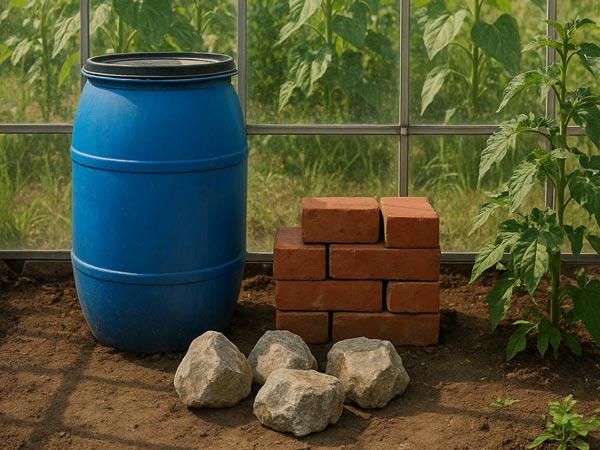
One simple approach is to use thermal mass—materials like water barrels, stone, or bricks placed inside the greenhouse. These absorb excess heat during the day and release it slowly at night, helping stabilize temperature swings. Another strategy is using plants themselves as shade providers. Tall crops such as corn or sunflowers planted around the outside of the greenhouse can block direct sunlight during the hottest hours, lowering overall heat stress without additional equipment.
Low-Energy Greenhouse Options
For growers with a slightly higher budget, there are low-energy solutions that can further improve efficiency without relying heavily on grid electricity.
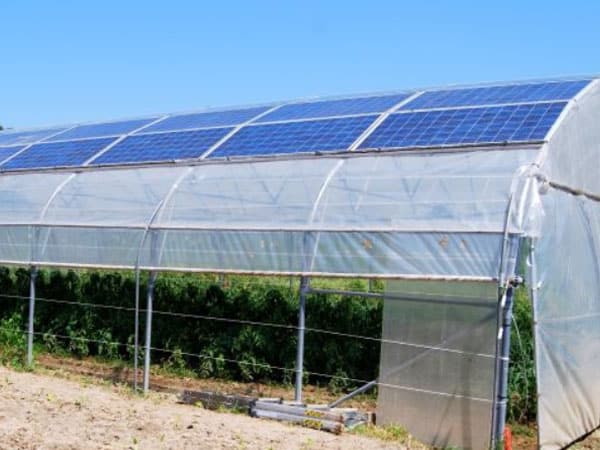
One option is solar-powered fans, which enhance airflow on hot days and can be installed even in small hobby greenhouses. Another is automatic vent openers—devices powered by temperature-sensitive hydraulic cylinders that open and close vents as the heat rises or falls. They require no electricity at all and are very reliable.
More advanced setups may include thermal curtains or automated shading systems, which can also be powered by solar panels. These systems adjust shading throughout the day, reducing heat gain when the sun is strongest. While they involve higher upfront costs, they save energy in the long term and provide consistent climate control.
Which Methods Are Right To Cool Your Greenhouse?
Not every method is suitable for all growers, and the right choice depends on your scale, budget, and crop type.
- For home gardeners, simplicity matters most. A combination of shade cloth, manual window opening, and occasional floor watering is usually enough to keep temperatures manageable. These methods are inexpensive and easy to apply without technical expertise.
- For small farms, more consistency is needed. Using shade cloth together with automatic vent openers and water troughs provides reliable protection with minimal energy use. This balance helps protect crops while keeping operating costs under control.
- For commercial greenhouses, where yield and quality are critical, a more advanced approach is recommended. High-quality shade nets, evaporative pads with fans (ideally powered by solar), and automated shading curtains can create a stable growing environment even during extreme summer heat. Though the investment is larger, the return comes from better crop performance and reduced losses.
Conclusion
Keeping a greenhouse cool in summer doesn’t have to mean installing costly central air conditioning or paying massive electricity bills. The core strategies—shading and ventilation—remain the most effective and affordable starting points. By adding simple methods such as evaporative, reflective materials, or passive design, growers can create a more stable environment without relying on electricity.
For those with larger operations, low-energy upgrades such as solar-powered fans or automatic vent openers can further improve efficiency. The key is to match the solution to your scale and budget, ensuring your crops stay healthy even during the hottest months. With the right approach, you can protect your harvest, cut costs, and maintain a sustainable growing system all summer long.
If you are interested in large-scale greenhouse construction, feel free to contact us for professional support and solutions.
FAQs
1. What is the ideal temperature inside a greenhouse in summer?
Most vegetables grow best between 20–30°C (68–86°F). Once the temperature rises above 35°C (95°F), heat stress can reduce flowering, pollination, and yields. This is why strategies are essential during hot months.
2. What percentage of shade cloth should I use in summer?
It depends on your crops. For common vegetables like tomatoes, cucumbers, or peppers, 40–50% shade is usually enough. Flowers and delicate crops may need 60–70%, because too much shading can slow growth.
3. Are there eco-friendly cooling options for a greenhouse?
Yes. Rainwater collection for evaporative, biodegradable shade cloth, and solar-powered fans are all sustainable solutions. These methods reduce reliance on electricity while protecting crops from extreme heat.

